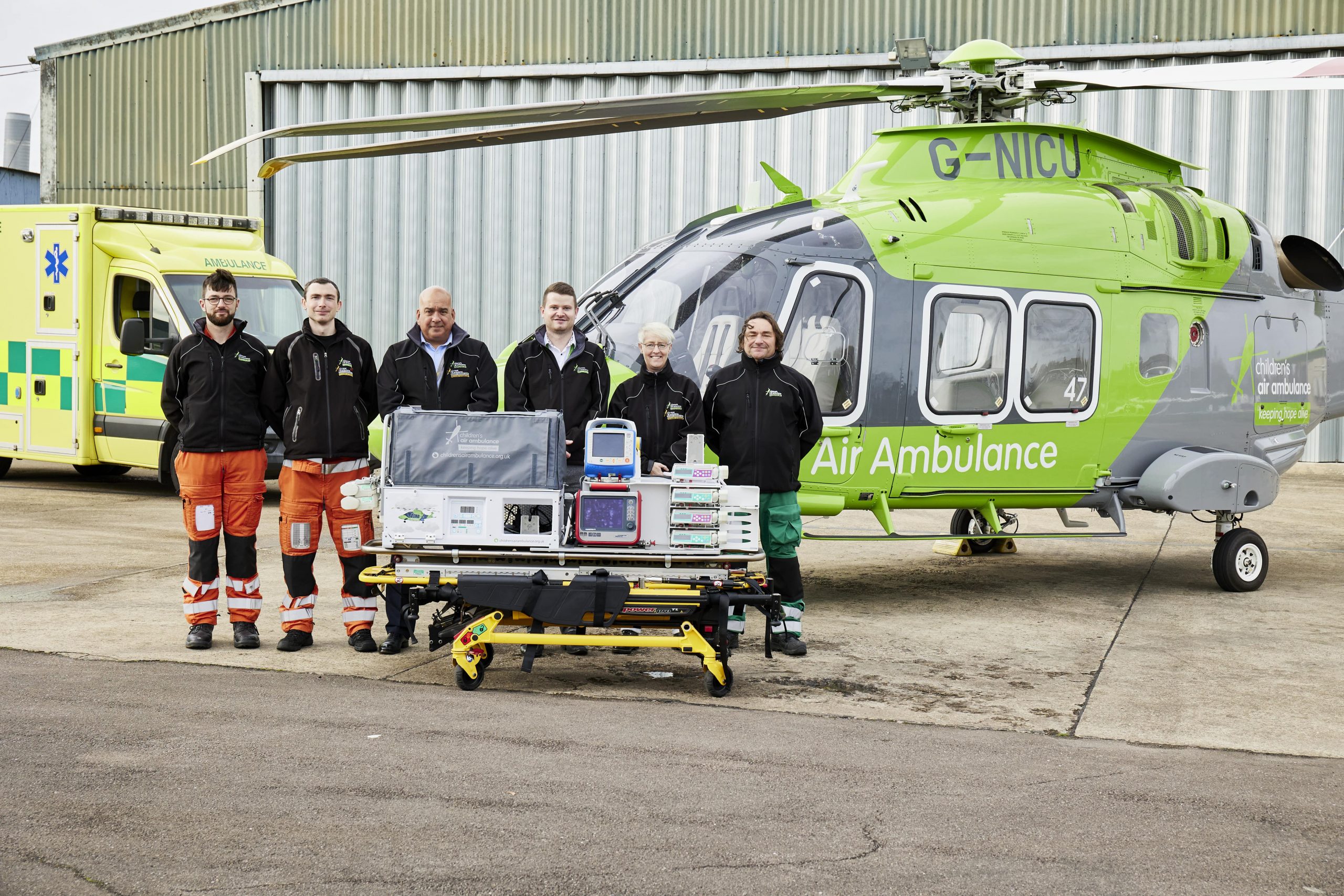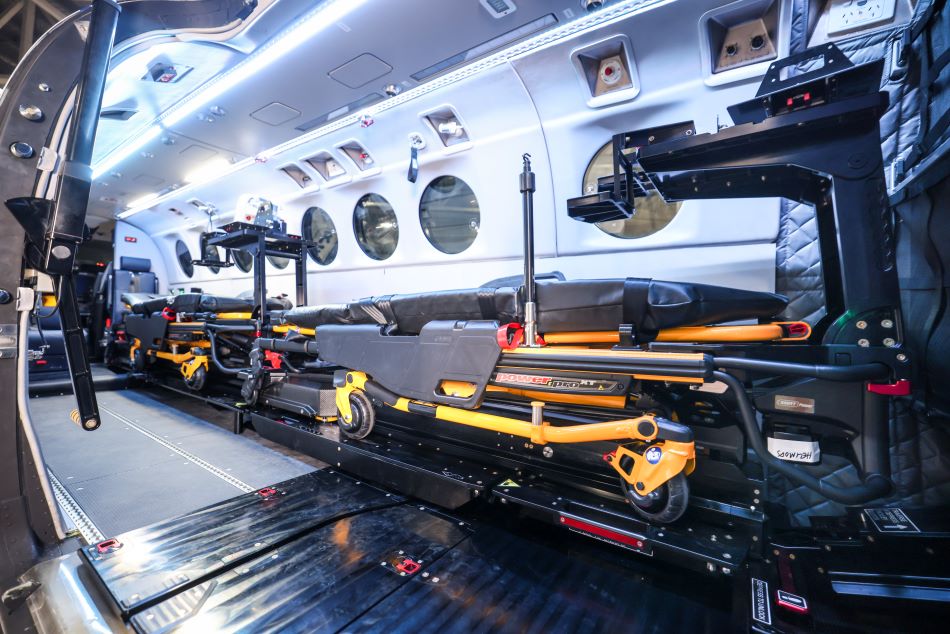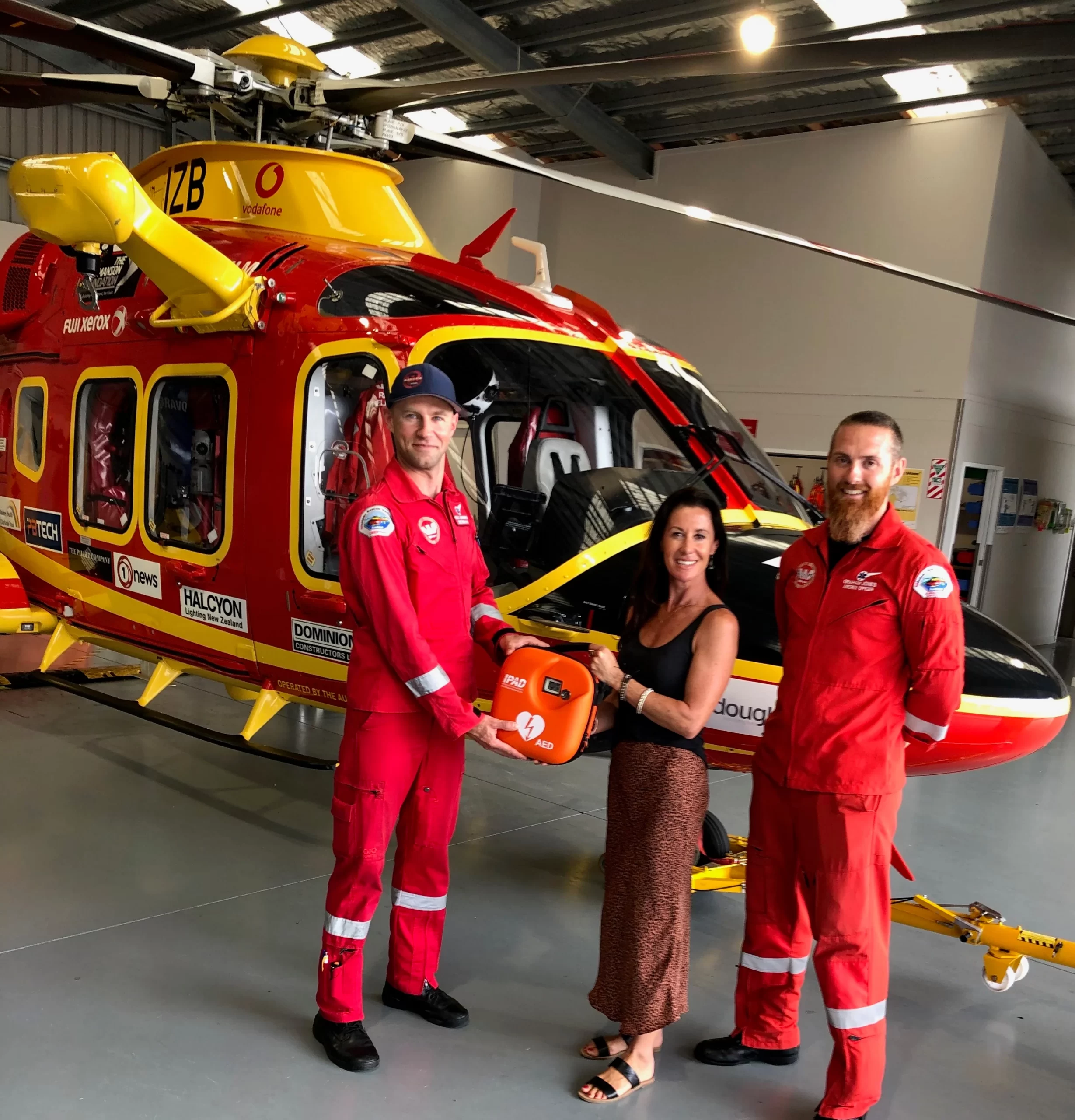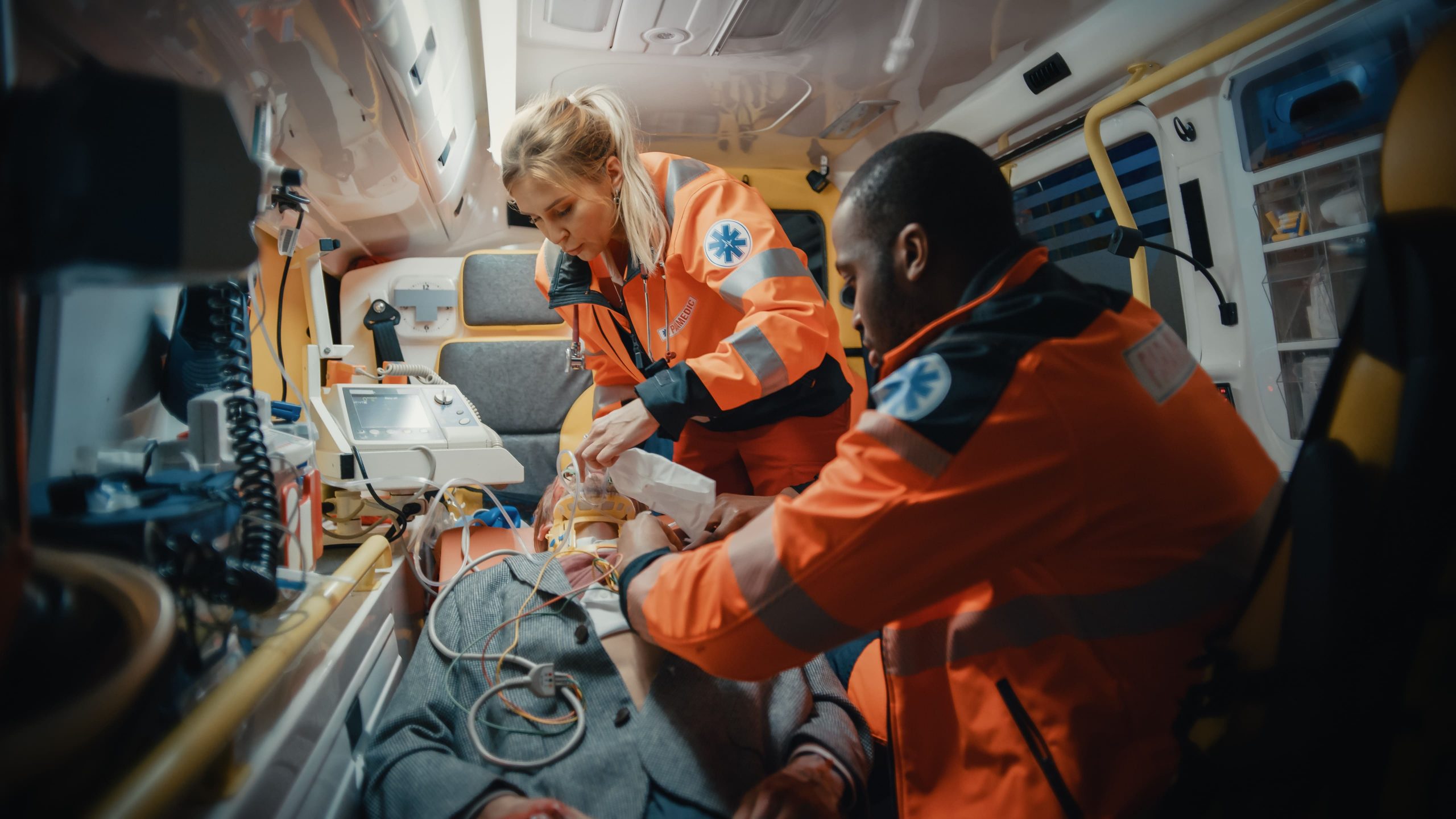Imagine this scenario: a premature baby is born in a remote location, far away from the specialized care they desperately need. Time is of the essence, and transportation by road is simply not an option. In steps the hero of the sky – the air ambulance. These incredible flying machines are equipped with all the necessary tools and equipment, including incubators, to provide neonatal intensive care during the critical journey to a hospital. Today, we will explore the fascinating world of neonatal intensive care on air ambulances, delving into the incredible technology and expertise that make it all possible.
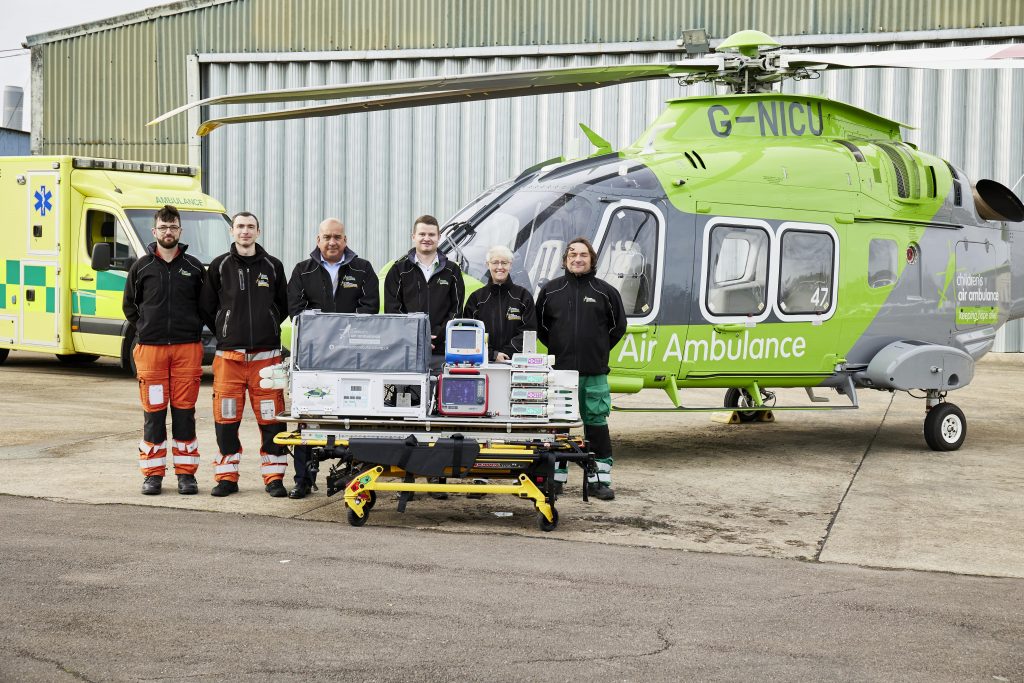
Neonatal Intensive Care on Air Ambulances
Introduction to Neonatal Intensive Care
Neonatal intensive care refers to specialized medical care provided to newborn babies who are born prematurely or have certain medical conditions that require immediate attention and monitoring. These delicate infants require highly skilled medical professionals and advanced equipment to ensure their well-being during transportation. In cases where neonates need to be transported by air, such as in emergency situations or when the distance is long, the use of air ambulances becomes crucial.
Importance of Neonatal Intensive Care on Air Ambulances
Air ambulances play a vital role in ensuring the safe and timely transportation of neonates who require intensive care. These tiny patients are often fragile and require a controlled environment during transportation. The ability to provide advanced medical care on air ambulances can significantly improve the chances of survival and long-term health outcomes for neonates. Furthermore, air ambulances can reach remote areas quickly, ensuring that infants in critical condition receive the specialized care they need without delay.
Challenges of Providing Neonatal Intensive Care on Air Ambulances
Transporting neonates on air ambulances presents several challenges due to their unique medical needs. The limited space and resources in an aircraft can make it difficult to provide the same level of care as in a hospital setting. The risk of turbulence and changes in cabin pressure can further complicate the care of these fragile infants. Additionally, the coordination and communication between healthcare professionals on the aircraft and the receiving hospitals pose additional challenges. Despite these difficulties, advancements in medical technology and specialized training for healthcare providers have greatly improved the ability to deliver high-quality neonatal care on air ambulances.
Incubators for Neonatal Intensive Care
Definition and Purpose of Incubators
Incubators are specialized medical devices designed to create a controlled and supportive environment for neonates requiring intensive care. These enclosed units provide regulated temperature, humidity, and oxygen levels, mimicking the conditions of a mother’s womb. Incubators are essential for maintaining the stability of premature or critically ill infants during transportation on air ambulances. They protect the fragile newborns from fluctuations in ambient temperature and provide a barrier against potential infections.
Types of Incubators Used on Air Ambulances
Several types of incubators are utilized on air ambulances to cater to the specific needs of neonates. Transport incubators are specially designed for use during transportation and are equipped with additional safety features such as shock absorption and secure harnesses to prevent movement. Isolettes, another type of incubator commonly used in air ambulances, provide a stable environment for neonates while allowing easy access for medical procedures. Both transport incubators and isolettes are lightweight, compact, and designed to fit securely inside the aircraft.
Key Features and Functions of Incubators for Neonates
Incubators for neonates on air ambulances possess several key features and functions to ensure safe and effective care. Temperature control is of utmost importance to maintain the infant’s thermoregulation. Incubators are equipped with temperature sensors and heating elements that enable precise adjustment of the internal temperature. Additionally, incubators typically have humidity control mechanisms to prevent dehydration and maintain optimal moisture levels for the neonate’s delicate skin. Furthermore, these units provide easy access to the baby while minimizing heat loss and protecting them from external stimuli, ensuring a secure and comfortable environment.
Medical Equipment and Supplies
Essential Medical Equipment for Neonatal Intensive Care
Neonatal intensive care on air ambulances requires a range of essential medical equipment to monitor and support the well-being of the infants. Some of the key equipment includes cardiac monitors to track the baby’s heart rate and rhythm, pulse oximeters to measure oxygen saturation levels, and respiratory support devices such as ventilators to assist with breathing. Additionally, infusion pumps are used to administer medications and fluids intravenously, while blood gas analyzers allow for real-time monitoring of the baby’s blood gases and electrolyte levels.
Specialized Supplies for Neonates on Air Ambulances
In addition to medical equipment, specialized supplies are necessary to ensure the care and safety of neonates during air transport. These supplies include appropriately sized and sterilized neonatal-sized diapers, blankets, and soft bedding to provide comfort and maintain hygiene. Furthermore, transport incubators and isolettes require adequate securing mechanisms, such as adjustable straps and foam padding, to prevent movement and vibration during the flight. Neonates also require specialized feeding equipment, such as oral syringes or nasogastric feeding tubes, to ensure proper nutrition during the journey.
Ensuring Safety and Effectiveness of Medical Equipment and Supplies
The safety and effectiveness of medical equipment and supplies are of utmost importance in neonatal intensive care on air ambulances. Regular maintenance and calibration of equipment are essential to ensure accurate readings, reliable performance, and adherence to safety standards. Quality control measures, including routine inspections and adherence to infection control protocols, help minimize the risk of contamination and maintain the integrity of supplies. Healthcare providers involved in neonatal transportation undergo rigorous training to ensure proper usage and handling of equipment and supplies, further enhancing the safety and effectiveness of neonatal care during air transport.
Monitoring and Life Support Systems
Vital Signs Monitoring for Neonates
Monitoring the vital signs of neonates during air transport is critical to detect any changes in their health status promptly. Heart rate, respiratory rate, blood pressure, and oxygen saturation are among the essential signs closely monitored. Advanced monitoring systems, such as multi-parameter monitors, provide real-time data, enabling healthcare professionals to intervene immediately if there are any abnormalities. Continuous monitoring ensures early recognition of deteriorations and helps healthcare providers make informed decisions regarding the neonate’s care.
Ventilation and Respiratory Support
Neonates requiring intensive care often require respiratory support, especially if they have immature lungs or respiratory distress. Air ambulances are equipped with ventilators capable of providing oxygen and mechanically assisting the baby’s breathing. These ventilators can be adjusted to deliver specific levels of oxygen and maintain appropriate ventilation rates tailored to the infant’s needs. Continuous monitoring of oxygen saturation and end-tidal carbon dioxide levels allows healthcare providers to make adjustments promptly, ensuring optimal respiratory support throughout the journey.
Intravenous Therapy and Medication Administration
Neonates requiring intravenous therapy and medication administration receive critical care during air transport. Secure and reliable intravenous lines are established to deliver fluids, medications, and nutrients directly into the infant’s bloodstream. Infusion pumps are used to administer controlled and precise amounts of fluids and medications, ensuring a safe and consistent delivery. Healthcare professionals are trained to handle and monitor these intravenous therapies while ensuring proper dosages and minimizing the risk of complications.
Specialized Neonatal Transport Teams
Role and Composition of Neonatal Transport Teams
Neonatal transport teams consist of specialized healthcare professionals dedicated to the safe and efficient transportation of neonates requiring intensive care. These teams typically include neonatal nurses, neonatologists, respiratory therapists, and paramedics or flight nurses. Each team member brings unique expertise and skills necessary to provide comprehensive neonatal care during air transport. Effective teamwork and clear communication among the team members are essential to ensure the well-being of the neonate throughout the journey.
Training and Expertise of Neonatal Transport Personnel
Neonatal transport personnel undergo specialized training to develop the skills required for safe and effective neonatal care in the unique environment of an air ambulance. This training includes education on advanced neonatal resuscitation, stabilization techniques, airway management, and the safe operation of medical equipment specific to air transport. Ongoing professional development and refresher courses are also essential to ensure that the transport personnel stay up-to-date with the latest advancements and best practices in neonatal care.
Collaboration with Other Healthcare Professionals
Neonatal transport teams work closely with other healthcare professionals, including referring hospitals and receiving hospitals, to ensure seamless continuity of care. Prior to transport, team members communicate with the referring hospital to gather relevant medical information about the neonate and establish a plan for transportation. Upon arrival at the receiving hospital, the transport team collaborates with the receiving healthcare team to transfer the infant’s care smoothly. This collaboration ensures that the neonate receives the necessary interventions and follow-up care without any delays or gaps in the care continuum.
Safety and Security Measures
Ensuring Safe Transportation for Neonatal Patients
Safety is the utmost priority when transporting neonatal patients on air ambulances. The design and construction of air ambulances prioritize the secure and stable transport of these fragile infants. Secure harnesses and padding inside the aircraft ensure that the infant and the incubator or isolette remain immobilized during the flight. The aircraft undergoes routine maintenance and adheres to stringent safety protocols to minimize the risk of mechanical failures or malfunctions. The air ambulance crew receives specific training on the safe handling and transfer of neonatal patients, further enhancing the safety of the transportation process.
Maintaining Optimal Environmental Conditions
Maintaining optimal environmental conditions is essential for the well-being of neonatal patients during air transport. Air ambulances are equipped with climate control systems to regulate temperature and humidity levels within the aircraft. These systems work in conjunction with the incubators or isolettes to provide a stable and comfortable environment for the neonate. The air filtration systems also play a crucial role in maintaining air quality and minimizing the risk of infections or exposure to harmful substances.
Handling Emergencies and Contingency Planning
Air ambulances are fully equipped to handle emergencies during neonatal transport. The aircraft is equipped with emergency medical equipment, such as defibrillators, emergency medications, and specialized resuscitation equipment. Additionally, the transport personnel are trained in pediatric and neonatal emergency procedures, enabling them to respond promptly and effectively in case of any emergencies. Contingency plans are in place to address unforeseen circumstances, such as adverse weather conditions or changes in the neonate’s medical condition, ensuring that the safety and well-being of the neonate are always prioritized.

Communication and Coordination
Importance of Effective Communication in Neonatal Transport
Effective communication is paramount during neonatal transport to ensure coordinated care and the timely exchange of vital information. The transport team communicates with the referring hospital to gather comprehensive medical information about the neonate and to address any specific concerns. Clear and concise communication between the transport personnel during the flight ensures seamless coordination and swift decision-making in case of any medical emergencies. Communication with the receiving hospital enables the smooth transition of care and facilitates the provision of any necessary follow-up interventions.
Coordination between Air Ambulance Crew and Receiving Hospitals
Coordination between the air ambulance crew and the receiving hospitals is crucial for the successful transfer of neonatal patients. The transport team communicates with the receiving hospital to provide information about the neonate’s medical condition and any specific requirements for the transfer. This collaboration ensures that the receiving hospital is prepared to receive the neonate and has the necessary resources and personnel in place to continue the care seamlessly. Ongoing communication between the transport team and the receiving hospital allows for effective handover of the neonate and ensures that the receiving hospital has all the relevant medical information.
Family-Centered Communication and Support
During neonatal transport, family-centered communication and support are essential to alleviate the anxiety and distress experienced by the parents or caregivers. The transport team communicates regularly with the family to provide updates on the infant’s condition, the progress of the transport, and any changes in the plan. Clear and empathetic communication helps address any concerns or questions the family may have and provides reassurance during this stressful time. Offering emotional support and involving the family in the decision-making process fosters a partnership between the healthcare team and the family, promoting trust and enhancing the overall experience for all involved.
Regulations and Guidelines
Regulatory Framework for Neonatal Intensive Care on Air Ambulances
Neonatal intensive care on air ambulances is governed by a regulatory framework that ensures the safety and quality of care provided to neonatal patients during transport. Regulatory bodies establish guidelines and requirements for the design and operation of air ambulances, including the standards for medical equipment, infection control protocols, and safety measures. Compliance with these regulations is mandatory for organizations providing neonatal transport services, ensuring that the highest standards of care are maintained throughout the transportation process.
Guidelines for Healthcare Providers in Neonatal Transportation
Healthcare providers involved in neonatal transportation follow specific guidelines developed by professional bodies and organizations specializing in neonatal care. These guidelines outline best practices and evidence-based recommendations for various aspects of neonatal transport, including equipment selection, monitoring parameters, medication administration, and infection control. Following these guidelines ensures that healthcare providers deliver consistent and high-quality care to neonatal patients during transport, promoting their safety and well-being.
Quality Assurance and Accreditation Standards
Quality assurance and accreditation standards play a crucial role in maintaining the quality and safety of neonatal intensive care on air ambulances. Organizations providing neonatal transport services undergo rigorous inspections and audits to assess their compliance with established quality standards. Accreditation bodies evaluate various aspects of the organization, including the qualifications and training of healthcare personnel, the adequacy of medical equipment and supplies, and adherence to safety protocols and infection control measures. Achieving accreditation demonstrates a commitment to providing superior neonatal care and instills confidence in patients, families, and referring hospitals.

Air Ambulance Infrastructure and Design
Design Considerations for Neonatal Intensive Care Units on Air Ambulances
The design of neonatal intensive care units on air ambulances requires careful consideration of several factors to ensure the well-being and safety of the neonate. The layout must accommodate the incubators or isolettes with sufficient space for medical personnel to access and care for the infant during transport. The units are designed to minimize turbulence and vibration to maintain a stable and secure environment for the neonate. Additionally, the layout includes storage compartments for medical equipment and supplies to ensure easy accessibility and organization throughout the flight.
Equipment Storage and Accessibility
Air ambulances are equipped with storage compartments specifically designed to safely store and secure medical equipment and supplies. These compartments are strategically located within the aircraft to ensure easy accessibility for healthcare providers during the flight. Equipment and supplies are organized and stored in a manner that allows quick retrieval without causing any disruption to the neonate’s care. The design of these storage spaces enhances workflow efficiency and helps healthcare professionals provide swift and effective interventions when needed.
Comfort and Privacy for Neonatal Patients and Families
Creating a comfortable and private environment for neonatal patients and their families is a crucial aspect of air ambulance design. The interior of the aircraft is designed to provide a calm and soothing atmosphere, minimizing external noise and distractions. Privacy curtains or partitions are available to afford privacy for medical procedures and consultations. Comfort features such as adjustable lighting, temperature control, and reclining seats for family members ensure a pleasant experience during the journey. These design considerations prioritize the well-being and emotional comfort of neonates and their families during air transport.
Advancements in Neonatal Intensive Care on Air Ambulances
Innovations in Incubator Technology
Advancements in incubator technology have revolutionized neonatal intensive care on air ambulances. Newer incubators incorporate advanced features such as touch-screen displays, integrated monitoring systems, and sophisticated temperature control mechanisms. Some incubators are equipped with microprocessor-based control systems that can adapt to the infant’s changing needs and provide a more precise and customizable environment. These innovations enhance the stability and safety of neonatal care during transport, improving outcomes for these tiny patients.
Miniaturized Medical Devices for Neonatal Care
The development of miniaturized medical devices has significantly contributed to the advancement of neonatal care on air ambulances. Smaller and lighter devices, such as portable ventilators, pulse oximeters, and infusion pumps, allow healthcare providers to deliver the necessary care without compromising space or maneuverability within the aircraft. These miniaturized devices are designed to be user-friendly and feature intuitive interfaces, enabling healthcare professionals to focus on providing exceptional care to neonates during transport.
Research and Future Directions
Continuous research and development in the field of neonatal intensive care on air ambulances drive innovations and shape future directions for improving care. Ongoing studies explore ways to further enhance the safety and comfort of neonates during air transport, such as investigating the effects of noise reduction measures and optimizing the design of transport incubators. Technological advancements, such as telemedicine capabilities and remote monitoring systems, offer the potential for real-time consultations and support from specialized neonatal care providers during transport. The collective efforts of researchers, healthcare providers, and engineers contribute to the ever-evolving landscape of neonatal intensive care on air ambulances, ensuring that the youngest and most vulnerable patients receive optimal care wherever they may be.
